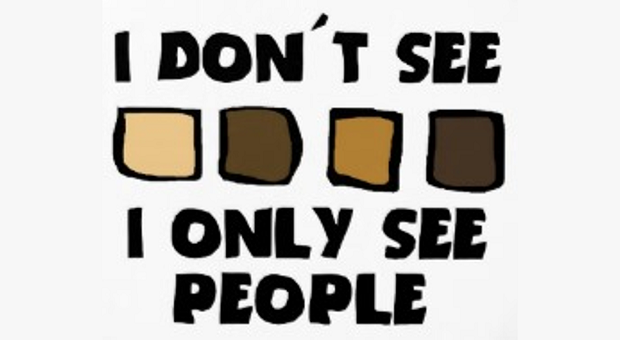
When I explain to people how I landed in the D&I space, it usually sounds something like this: “The more I learn about equity and justice, the more I believe that education about these topics has the potential to address most of the problems in our world. Unfortunately, in our culture, the only place where that type of learning is currently embedded in many people’s experience is in workplace trainings, so I decided to start there.”
Despite the many ill-informed clickbait articles that would have you believe otherwise, we observe firsthand how much learning and perspective-changing can occur in workplace education about diversity and inclusion. It is an exciting space to work in, particularly as more and more organizations are recognizing the need to invest resources in D&I efforts and antiracism education. Also, the workplace is a single facet of much broader systems of oppression that have shaped our cultures and experiences and continue to afford white people protections and opportunities that BIPOC do not have.
There are no two ways about it: a siloed approach to “workplace D&I” devoid of attention and action to the rest of our world is not just flawed, it is fundamentally failing to bring about the progress we need.
A siloed approach to 'workplace D&I' devoid of attention and action to the rest of our world is not just flawed, it is fundamentally failing to bring about the progress we need. Share on XConsider: As it relates to workplaces directly, Black Americans receive 36% fewer callbacks than equally–qualified white applicants and are paid an average of 28% less than white employees with the same positions. Workplaces can and must address these disparities by diversifying their recruitment, working to eliminate bias in hiring and promotion, and auditing their pay structures to identify and address inequities.
Even if they succeed, however, the following facts remain:
- Black women face significantly higher maternal mortality rates than their white peers, regardless of socioeconomic status and level of education
- In law enforcement, Black individuals are significantly more likely than white individuals to be stopped by police, be arrested, be charged, and to receive longer sentences for the same infractions. They are 2.5x more likely to be killed by police.
- Schools are more segregated today than in 1954. Black children are significantly more likely to be disciplined, suspended, and expelled than their white peers.
- Voters of color wait an average of twice as long at polling places than white voters, and voter ID laws disproportionately disenfranchise BIPOC by requiring forms of ID that, due to economic, time, and access restraints, white voters are more likely to possess.
These are just a few of the many additional burdens and fears that BIPOC employees are living with daily and bringing to work with them as a result of white supremacy and systemic racism. Organizations that approach this work internally without taking external action will continue to fail employees who have historically been underrepresented—even once hiring, compensation, and internal cultural problems are addressed.
The last few weeks and months have been draining, full of uncertainty, and frightening for most of us. We find ourselves in the midst of a pandemic and recession that is disproportionately harming BIPOC communities, worldwide protests for racial justice, and an election season throughout which the sitting US president has continued to spew racist rhetoric and push for policies that set progress back decades—all while tokenizing people of color to paint him in a positive light. For many, this historical moment has also been a wake-up call: we cannot sit idly by while gross injustices persist.
The last few weeks and months have been draining, full of uncertainty, and frightening for most of us. For many, this historical moment has also been a wake-up call: we cannot sit idly by while gross injustices persist. Share on XThe next question becomes: what can we DO?
In our last series, we explored the ways that organizations can meaningfully strategize for racial equity beyond the go-to 2-hour training sessions that have recently faced unprecedented demand. This deeper work is essential. It is also not as deep as the work must go.
In our forthcoming “Beyond the Boardroom” series, we take an even wider view of the racial justice work that must be done outside of the workplace: in our homes and schools, our elections, our healthcare and criminal justice systems, our environment, and our faith communities.
How can we better bridge between workplace DEI efforts and equity and justice more broadly? For starters, The Winters Group is hosting a screening and discussion of Rigged: The Voter Suppression Playbook on September 17th. We are committed to expanding our stakeholders’ understanding of the history and current state of voter suppression, and how it has worked in tandem with other systems to harm BIPOC and other marginalized communities. Relatedly, a growing number of organizations are announcing they will give their employees election day off, and this week, Old Navy announced it will pay its employees to work the polls on election day. This is the kind of change we need to keep pushing for.
We challenge organizational leaders to get out of their corner offices and engage outside of the boardroom in a far-reaching, justice-driven campaign to combat systemic racism. Share on XWe embark on this series challenging organizational leaders to get out of their corner offices and engage in these topics outside of the boardroom in a far-reaching, justice-driven campaign to combat systemic racism. Not only is this the right thing to do, it will also make clear to employees and consumers the stark difference between those organizations that are truly committed to antiracism, and those that are modeling hypocritical “woke-washing,” lip service, and band-aid approaches. Join us in your commitment to take D&I work ‘Beyond the Boardroom’ in the coming months by learning about and acting within the many interconnected systems that drive persistent racial injustices.



















